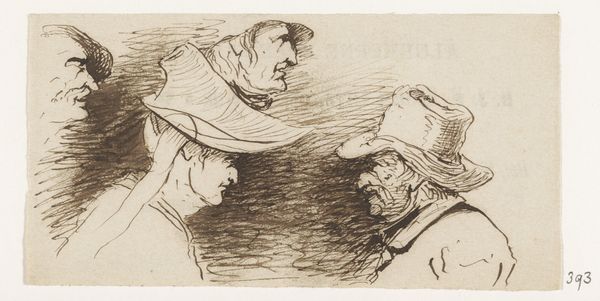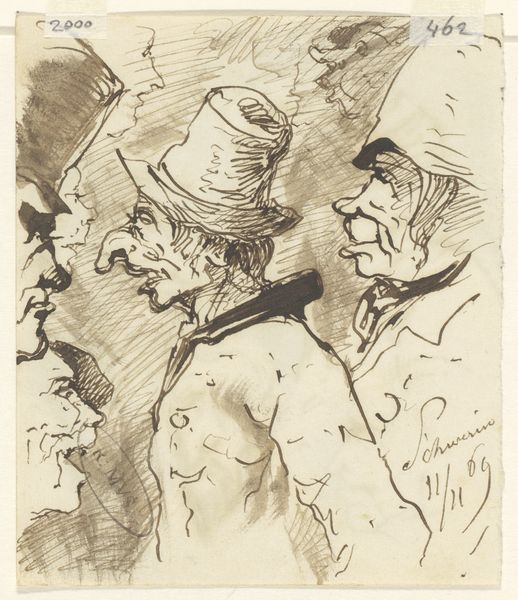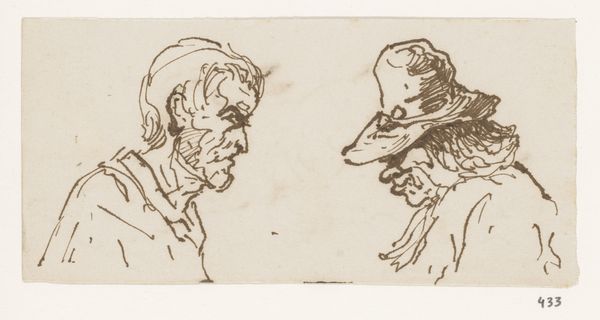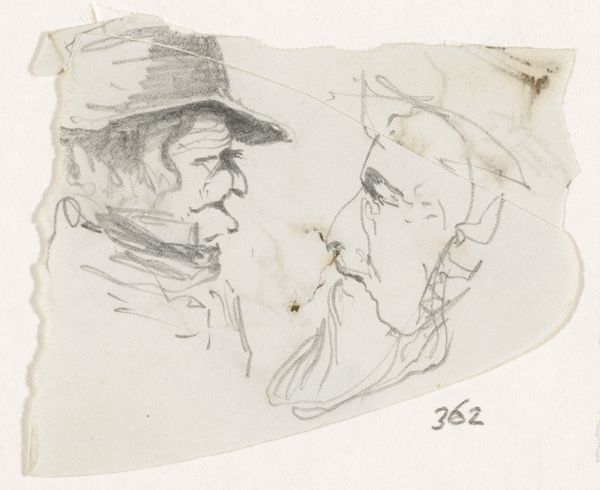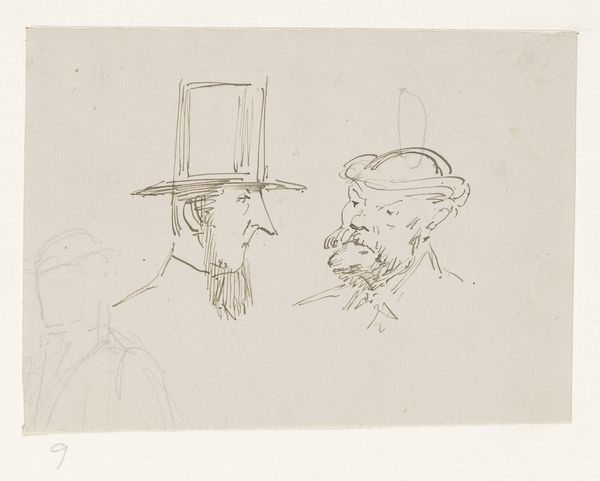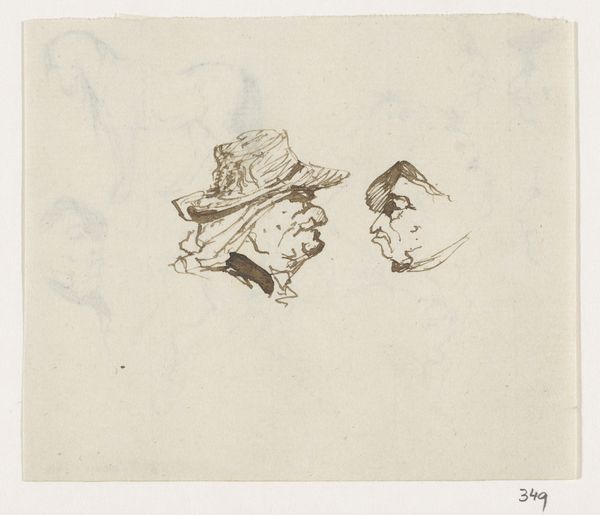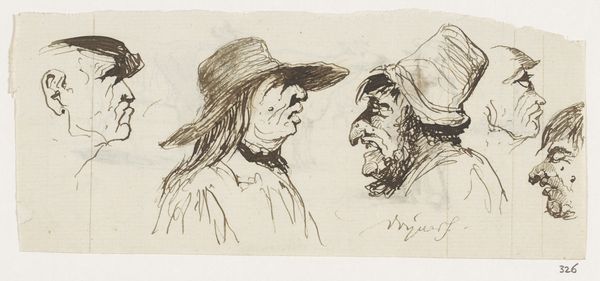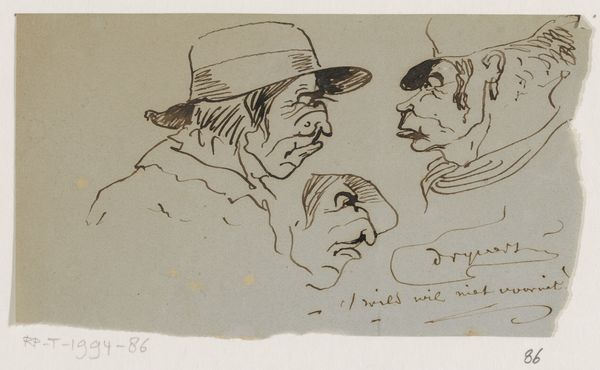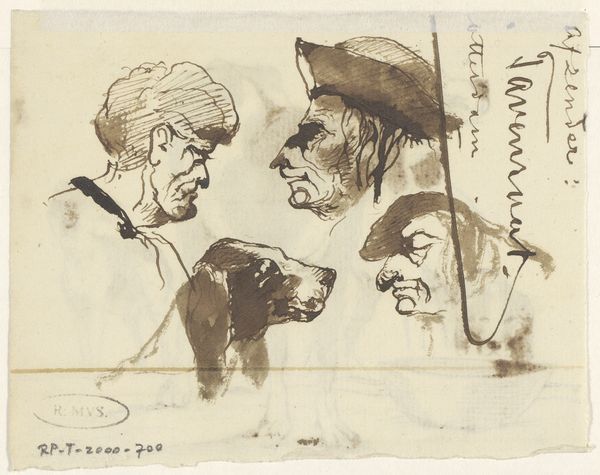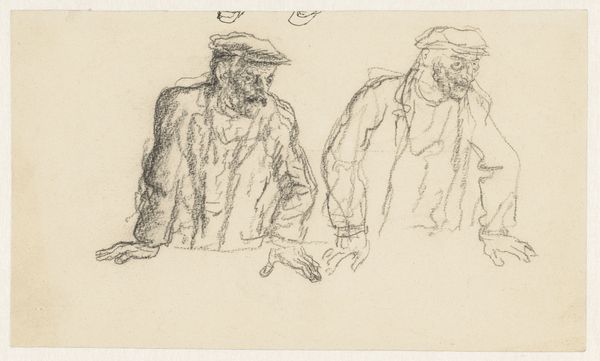
Dimensions: height 69 mm, width 140 mm
Copyright: Rijks Museum: Open Domain
Editor: We're looking at "Krakeel," a pen and ink drawing by Johannes Tavenraat, dating from somewhere between 1840 and 1880. It reminds me of a political cartoon. I am really intrigued by how quickly he seems to have worked to capture so many emotions. What visual elements stand out to you the most in this piece? Curator: Primarily, the dynamism inherent in the linear structures strikes me. Observe how Tavenraat manipulates line weight and density to construct form and imbue it with energy. Note the hatching technique, deployed not merely to suggest volume, but to visually articulate the very air crackling between the figures. Editor: It’s almost like the cross-hatching creates this charged atmosphere between the characters, the lines themselves contributing to that feeling of conflict. What does that achieve, structurally? Curator: Precisely! By foregoing tonal gradations and relying almost exclusively on line, the artist compels us to focus on the fundamental relationships between form and space. The figures are defined by absence as much as presence, rendered incomplete, so to speak, by the surrounding network of lines. This absence serves to actively implicate the viewer. We are, in essence, asked to complete the composition. Do you follow my thinking? Editor: Absolutely. I had never really considered the absences being so prominent here and the affect the surrounding network of lines gives. This drawing gives form to the idea that empty spaces or missing data actively prompt visual interaction. Thanks for your perspective! Curator: A stimulating observation on your part. It proves the piece’s structural strength lies in the interplay between representation and abstraction, engaging the eye in a visual game of construction.
Comments
No comments
Be the first to comment and join the conversation on the ultimate creative platform.
